
-
Find the right food for your pet
Take this quiz to see which food may be the best for your furry friend.
Find the right food for your pet
Take this quiz to see which food may be the best for your furry friend.
Featured products
 Adult 7+ Perfect Digestion Chicken, Whole Oats & Brown Rice Recipe Dog Food
Adult 7+ Perfect Digestion Chicken, Whole Oats & Brown Rice Recipe Dog FoodScience Diet's breakthrough nutrition supports ultimate digestive well-being & healthy microbiome for dogs age 7+
Shop Now Adult Healthy Cuisine Roasted Chicken, Carrots & Spinach Stew Dog Food
Adult Healthy Cuisine Roasted Chicken, Carrots & Spinach Stew Dog FoodDelicious roasted chicken paired with tender vegetables in a succulent stew
Shop Now Small & Mini Savory Stew with Chicken & Vegetables Dog Food
Small & Mini Savory Stew with Chicken & Vegetables Dog FoodA delicious complement to the nutrition of Science Diet Small & Mini 7+ dog food
Shop NowFeatured products
 Adult 7+ Senior Vitality Chicken & Vegetable Stew Cat Food
Adult 7+ Senior Vitality Chicken & Vegetable Stew Cat FoodImproves Everyday Ability to Get Up & Go
Shop Now Adult Savory Entrée Can Variety Pack Cat Food
Adult Savory Entrée Can Variety Pack Cat FoodPrecisely balanced nutrition with the delicious taste of savory minced chicken to help fuel the energy needs of cats during the prime of their life
Shop Now Adult 7+ Tender Tuna Dinner Cat Food
Adult 7+ Tender Tuna Dinner Cat FoodWith delicious chunks in a decadent gravy
Shop Now -
Dog
- Dog Tips & Articles
-
Health Category
- Weight
- Food & Environmental Sensitivities
- Urinary
- Digestive
- Joint
- Kidney
-
Life Stage
- Puppy Nutrition
- Adult Nutrition
- Senior Nutrition
Cat
- Cat Tips & Articles
-
Health Category
- Weight
- Skin & Food Sensitivities
- Urinary
- Digestive
- Kidney
-
Life Stage
- Kitten Nutrition
- Adult Nutrition
Featured articles
 Does My Pet Hate Me?
Does My Pet Hate Me?Learn tips for bonding with your pet if you've ever thought, 'My dog doesn't like me, or 'Why do I have a standoffish cat?'
Read More Do Dogs and Cats have Belly Buttons?
Do Dogs and Cats have Belly Buttons?Learn whether cats & dogs have belly buttons like humans, what the function is, and if there are any health concerns associated with it.
Read More Why Are Dogs and Cats So Cute?
Why Are Dogs and Cats So Cute?If waggy puppy dog tails and furry kitten yawns make you swoon, you're not alone. Why are cats so cute? And, dogs too! Let's find out!
Read More -


Cats reign supreme as the favorite subject of irresistible internet videos; it's only natural to wonder if they might enjoy watching videos, too. But can cats see TV and understand what they're watching on the screen? Do cats watch TV and think, "Wow, what a great show?"
Inquiring cat parents want to know if — and why — their furry friend is entertained by screens, and what's so appealing about them.
Can Cats See TV?
The short answer is "sort of." Many cats can and do engage in television programming, but they "don't bring the same perspective as humans to viewing," note the veterinarians at VetBabble. Cats are entertained by the color and movement, and although cats are very smart, they do not have the cognitive and reasoning capabilities to process images and sounds into more complicated thoughts. While watching a red cardinal flit about on a tree branch, your cat isn't thinking, "What a beautiful red bird!" Instead, your cat's thinking is more along the lines of "Small object! Movement! Must catch!"
Like humans, cats use vision and hearing to engage with TV, but cats are also drawn to electronic screens because some videos appeal to a cat's innate hunting instincts.
Sensory Reactions
Vision is a primary source of television engagement, so when you wonder if cats can see television, it's helpful to think about how their eyes work. The way in which cats see the world begins when light hits the retina. The two main photoreceptor cells in the retina, cones and rods transfer the light into electric signals. These electric signals are sent to the brain, allowing cats to "see" the images in front of them.
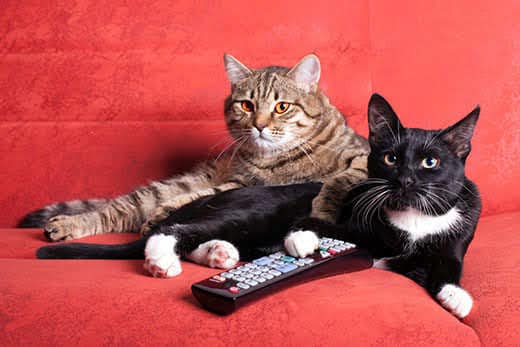
As explained in the Merck Veterinary Manual, a cat's cone cells give them "excellent visual acuity and binocular vision," and give them the ability to see different colors. Because they have fewer cones than humans, cats can't see a full spectrum of color, but kitties can see red, green and blue. However, cats have more rods than humans, which is why they have much sharper vision than humans in dim light — up to six times better than their pet parents, says Merck.
Because of the structure of their eyes, cats are more likely to engage in television that contains a combination of red, green and blue paired with swiftly moving objects. A lot of children's TV shows, for instance, contain primary colors and quick movements, so don't be surprised if your fur baby enjoys watching kids' programming.
A cat's sense of hearing is one of its strongest assets, which is why the sound of TV also attracts cats. "A cat up to 3 feet away from the origin of a sound can pinpoint its location to within a few inches in a mere six one-hundredths of a second," points out Animal Planet. "Cats also can hear sounds at great distances — four or five times farther away than humans." Because of their exemplary auditory acuity, a cat's ears will perk up when they hear sounds on TV that occur in nature.
Behavioral Reactions
When your cat sees that red cardinal flying from branch to branch, they're hard-wired to whack it out of the air. Because of their strong sense of hearing, cats can determine the size and location of prey just by hearing small movements like a mouse rustling in the grass. If your favorite TV show contains the sound of the cardinal flapping its wings and whooshing through the branches, a cat's going to be in hunting heaven.
The most common prey for cats are birds, small mammals and fish, all of which make for good cat TV programming. Can cats see TV without trying to ambush and attack what's on the screen? Definitely. While some cats go nuts for on-screen antics, others are content to watch the activity with an air of calm, and still others may not be interested in TV at all. Depending on their temperament and the depth of their hunting instinct, your cat may or may not engage with television or other electronic screens.
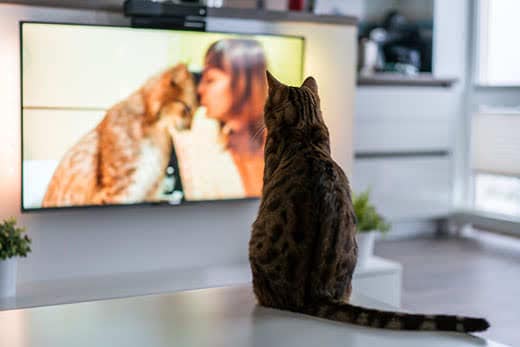
Some cats may show interest in programming that features other cats, although researchers have not yet determined whether cats visually recognize other cats, or even themselves. Seeing another cat on the screen probably wouldn't activate their hunting instinct anyway because in addition to hearing, a cat's sense of smell is one of its strongest advantages. Cats have over 200 million scent receptors (compared to the 5 million that humans have), giving them the ability to detect prey from great distances. But "even if they can identify other cats on television, the majority of cats are unlikely to feel threatened by them as they would a neighbor's cat because they cannot detect their scent or other cues that tell them it is a real cat," says Cats Protection UK. Until technological advances perfect smell-o-vision, your cat shouldn't react too negatively to seeing other cats on the screen.


Tasty Tips
Enrichment Benefits of TV
An influential 2008 study conducted by the School of Psychology at Queen's University Belfast on how indoor shelter cats respond to visual stimulation revealed interesting results on the subject of cats and television. The researchers determined that two-dimensional screen time does provide a level of enrichment for cats, particularly those images with "elements of prey items and linear movement." This study also revealed that most cats' interest waned after three hours, a pretty long stretch of time given that cats are only active about seven hours a day, resulting in some kitty binge-watching.
Since this study, other cat behaviorists have incorporated videos into cat enrichment programs. Videos can play an important role in your cat's environmental enrichment, explain the researchers leading the Indoor Pet Initiative at Ohio State University College of Veterinary Medicine. Watching "live action" videos indulges their hunting instinct and is especially beneficial if your kitty doesn't have easy access to a view outdoors.
These days, you don't have to look too far to find television programming aimed at cats themselves. There are dedicated visual and audio streaming options, for example, specifically curated for your feline friend. If you don't have a television handy, there are plenty of interactive game apps for your cat that are available for download as well.
Do cats watch TV to chill out? If your cat has anxiety, television may help calm them during stressful situations, explains the Ohio State University College of Veterinary Medicine. During thunderstorms or loud constructions, the "white noise" of the TV may drown out the unpleasant sounds around your cat. Leaving on the TV when you're away from home can also be beneficial if your kitty needs some extra comfort and enrichment.
When your cat engages in electronic stimulation, it's important to pay attention to their behavior. Because cats are such instinctive hunters and love to swat at birds on-screen or hunch down to pounce on an animated squirrel, they may get frustrated when they are unable to catch their electronic prey, points out International Cat Care. Instead of a sole source of entertainment for kitties, think of TV time as a supplement to other enrichment activities that you can engage in together. Nothing replaces in-person, interactive engagement between you and your furry friend. Balance electronic stimulation with old-fashioned playtime, such as chasing stuffed catnip toys or setting up a cat perch from which they can observe a real-life nature show.
As more and more programming is created with cats in mind, it's nice to know that you and your cat can snuggle up together for some downtime. With all the options at your fingertips, there's bound to be a show you can both agree on.


Christine O'Brien is a writer, mom, and long-time cat parent whose two Russian Blues rule the house. Her work also appears in Care.com, What to Expect, and Fit Pregnancy, where she writes about pets, pregnancy, and family life. Find and follow her on Instagram and Twitter @brovelliobrien.
Related products

With delicious chunks in a decadent gravy

Supports energy level and beautiful fur in mature cats

Precisely balanced nutrition with the delicious taste of savory minced chicken to help fuel the energy needs of cats during the prime of their life

Improves Everyday Ability to Get Up & Go
Related articles
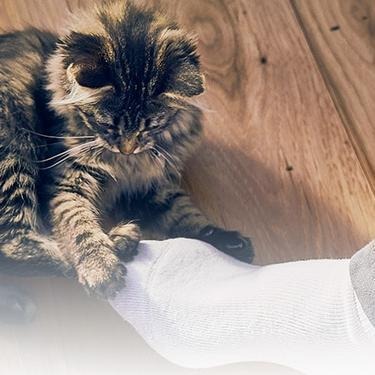
Discover which cat toys games your feline friend might like, and how they are great sources of exercise. Explore our library of articles to learn more.
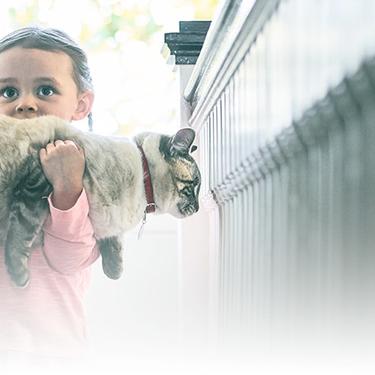
Discover how to identify cat sensitive skin and what you can do to help your cat thrive from head to paw.
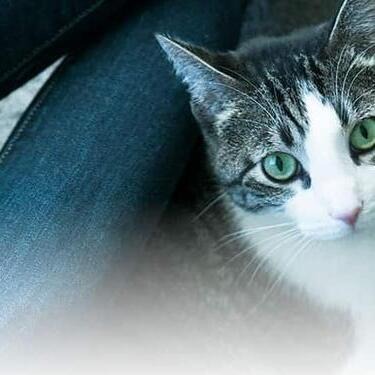
Brushing your cat's teeth is just as important as brushing your own. Learn signs or oral health problems in your cat and how to avoid them.
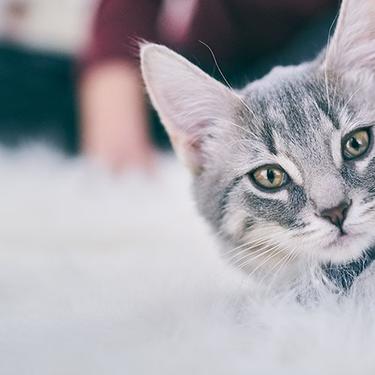
Discover the benefits of Hill's line of kitten foods and how they provide complete and balance nutrition for growing kittens.

Put your cat on a diet without them knowing
Our low calorie formula helps you control your cat's weight. It's packed with high-quality protein for building lean muscles, and made with purposeful ingredients for a flavorful, nutritious meal. Clinically proven antioxidants, Vitamin C+E, help promote a healthy immune system.
Put your cat on a diet without them knowing
Our low calorie formula helps you control your cat's weight. It's packed with high-quality protein for building lean muscles, and made with purposeful ingredients for a flavorful, nutritious meal. Clinically proven antioxidants, Vitamin C+E, help promote a healthy immune system.

